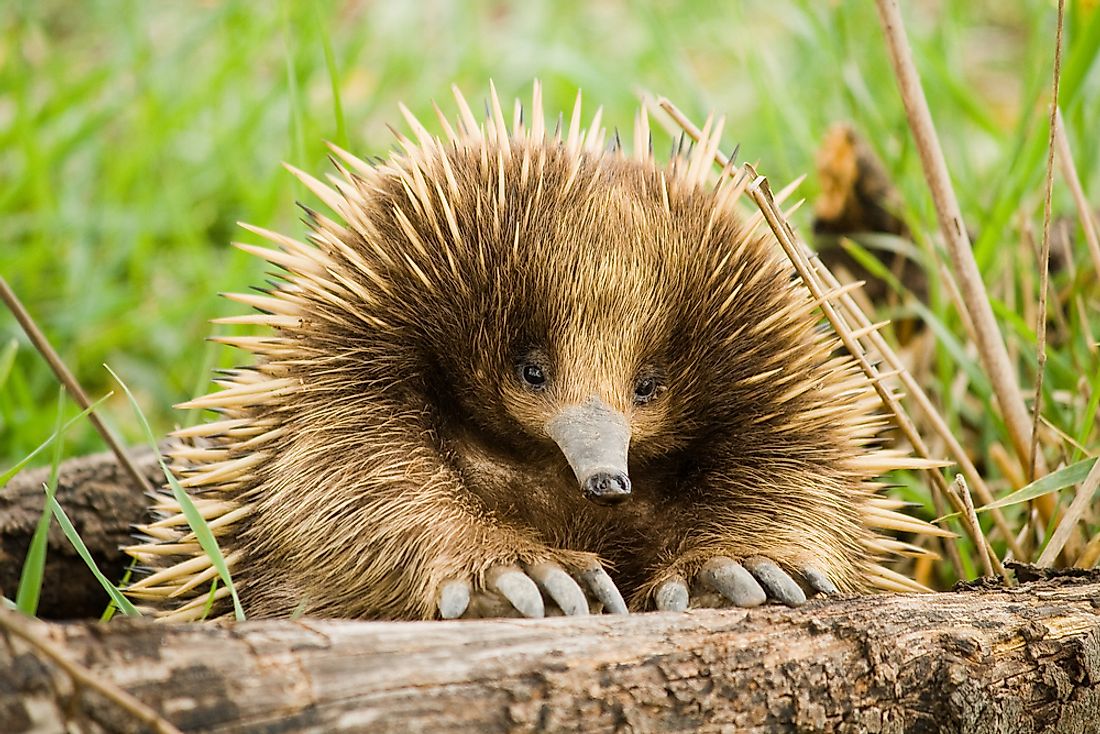What are Monotremes?

Egg-Laying Mammals
Mammals are warm blood animals that stay on land. They are referred to as mammals because they have mammary glands responsible for manufacturing and producing milk especially in the female mammals. This milk producing gland contains a hormone that is activated when a mammal gives birth to a young one. Mammals are also known to carry a baby through a gestation period before they can deliver it. Some of the common mammals include human beings, animals living on land, whales which are considered cold-blooded mammals. Monotremes, however, are a particular kind of mammals who lay eggs. In fact, they are oviparous who lay between one to three eggs just in the same manner as do birds.
Evolutionary history
Monotremes are divided into two broad categories. That is dark billed flat-footed platypus and spiny anteater called echidnas. Fossil discovery and analysis show a slow form of evolution in monotremes compared to other mammals. This evidence is backed by a jaw-bone of platypus discovered in Australia. In fact, fossil records haven’t shown much of the monotremes evolution forcing researchers to rely on molecular data. However, some researchers have wondered whether monotremes are related to Teinolophos, a very old creature native to Australia that lived more than 100 million years ago. If this is so, then monotremes might have split into the two groups much earlier than the 80 million years suggested by the molecular data
Reproduction
The reproductive system of the monotremes is highly specialized to produce both milk and eggs. The female tract is similar to that of birds although a female echidna posse extra pouches. Their eggs are similar to those of reptiles though their way of mating is entirely different. Male monotremes have no scrotum while their testes are inside of their abdominal cavity. The penis is located in the preputial sack when not erect. Monotremes mate naturally just as birds would. The male sometimes holds the female firmly during mating with the set of spurs on its back legs. Estrogen and androgen hormones in female and male monotremes significantly influence their reproduction.
Lifestyle
Monotremes live on land but can also swim in water. In fact, they can quickly submerge in water for some time. When submerged in water platypus closes its eyes and ears and relies on its bill to sense its prey in water when hunting. Once it catches its prey, especially worms, it stores it in its cheek and waits till it resurfaces before it can eat it
Habitat
Dark-billed platypus is mainly confined to Eastern Australia and Tasmania especially in areas with fresh water including rivers, streams, and freshwater lakes. The short-beaked echidna is commonly found in Australia, Indonesia, and New Guinea in those countries' semiarid areas. Eastern long-beak echidna and Attenborough’s long-beak echidna are found in Indonesia and New Guinea in Africa especially in the relatively dry area. Also, the two spurs on the male hind legs release venom that kills its prey.
Threats
Monotremes have a lifespan of about ten years but, much like many other animals, they also face a great deal of challenges that have threatened their extinction. Some of their common enemies are those that live with them in the same habitat such as snakes and foxes. Habitat destruction as a result of man’s activities has also threatened their existence.
More Than Meets The Eye
Monotremes, being a unique type of mammal that is sometimes considered primitive has a sophisticated reproductive system and unique body features that aid its survival. There are only five extant species existing today. These species are native and most common to Australia and New Guinea.
Monotremes - Mammals That Lay Eggs
| Extant Species of Monotreme Mammals | Native Countries |
| Attenborough's long-beaked echidna | Indonesia and Papua New Guinea |
| Duck-billed Platypus | Australia |
| Eastern Long-beaked Echidna | Indonesia and Papua New Guinea |
| Short-beaked Echidna | Australia, Indonesia, and Papua New Guinea |
| Western long-beaked echidna | Indonesia |











